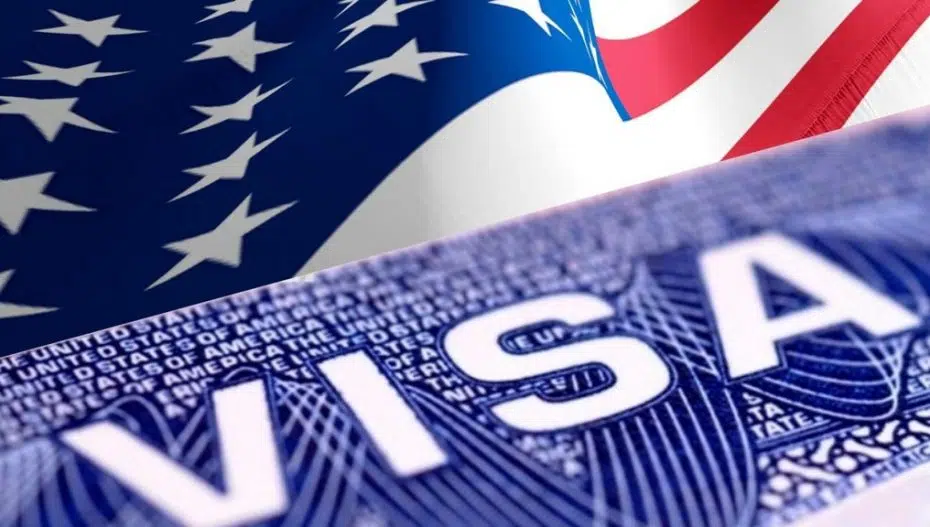H-3 Visa Guide for Trainee or Special Education Visitors
The H-3 visa, or Trainee or Special Education Visitor visa, is another form of US employment visa. This visa is for foreign nationals who wish to visit the United States for a limited time to acquire training or special education.
The H-3 visa allows its holders to enter the country and enroll in the training institution of their choice. The applicant must participate in a training program that is not accessible in their native country to get this visa.
The training program should not be an academic or medical degree but a practical one that provides the candidate with enhanced abilities.
The candidate must gain this new information and abilities and demonstrate that they will apply them in their native nation. The candidate should be able to grow in their career due to the training program.
About H-3 Visa
The United States Citizenship and Immigration Services (USCIS) issues H-3 visas to trainees or special education exchange visitors who want to work outside the country. Trainees’ spouses and children under 21 may accompany them to the United States, but they may not work there.
Other than graduate or medical education training, an H-3 trainee must be invited by a person or organization to acquire training not accessible in their native country in sectors such as agriculture, commerce, communications, finance, government, and transportation. Physicians are not eligible, but medical students and nurses are.
The employer must show that the trainee will only be placed in productive work if it is essential for the training. The petitioner must file Form I-129, “Petition for a Nonimmigrant Worker,” and the trainee may stay in the United States for up to two years if accepted.
Children with physical, mental, or emotional challenges will receive a special education exchange visitor training program. Unfortunately, there are just 50 visas available every year, and only one was granted in 2012. The duration of validity is 18 months.
Eligibility Criteria For The H-3 Visa
Two types of programs that qualify for the H-3 visa:
Training programs
This can be in any field except for medical professions and training. Examples of fields that qualify for training programs are:
- Finance
- Transportation
- Agriculture
- Communications
- Government
- Business, etc.
Special Education
This means that the applicant will enroll in a theoretical or practical program to advance their knowledge about children with special needs, such as:
- Physical needs
- Mental challenges
- Emotional challenges
The holder of an H-3 visa is not permitted to work in the United States. Therefore, the applicant can only do practical work that is part of the training program’s curriculum.
They cannot, however, enter into any work contract in the United States that is deemed formal employment.
Other types of visas, such as the H-1B visa, H-2A visa, H-2B visa, and so on, are required for employment.
The US government only issues a limited amount of H-3 visas each year. As a result, only 50 persons from other nations are granted visas to enter the United States out of all the applicants.
Requirements for H-3 Visa
To be eligible for an H-3 visa, the applicant must meet a few conditions:
- There must be a formal invitation for the applicant from the training institution
- The applicant couldn’t find the program in their home country
- The program doesn’t involve medical training
- The applicant intends to return to their home country after the training program is over
- The training or special education program will benefit the applicant’s career
- The applicant will not have a full-time job in the US, with the exception of work foreseen in the training program
Because the institution hosting the training must invite the applicant in order for the visa to be granted, they need also provide a full description of the training program.
The following should be included in this description:
- The curriculum and structure of the program
- The time when lectures should be held, and if applicable, when and how many hours of practical work are necessary
- The financial and other benefits that the institution gets by providing that specific type of training
- The type of careers and professions that will benefit from the training program
- The benefits that the applicant will get from the training
- The reasons why this training program doesn’t exist in the applicant’s home country
This description should be sent to the United States Citizenship and Immigration Services (USCIS) as part of the application process shown below.
How to Apply for an H-3 Visa
The H-3 visa, like the other H-type visas, cannot be initiated by the applicant. Instead, the candidate must locate a suitable training program and apply for admission.
The training program’s host institution should subsequently begin the H-3 visa application procedure. But, first, the institution should petition the appropriate agencies for the H-3 applicant to be granted a visa, just as it would for H-1B, H-2A, or H-2B visas.
The training institution should file a petition with USCIS.
This includes a description of the training or special education program that the applicant wishes to attend, as well as other paperwork such as:
- The staff of the training institution
- The profile of the applicant with details about:
- Education and previous degrees
- Prior training
- Work experience in the relevant field that the training will be about
- Whether the applicant will receive any financial benefit from the training
- If it is a special education institution, it should also provide proof that they offer such services or training
Send USCIS Form I-129
In addition, the institution must submit Form I-129, Petition for Nonimmigrant Worker, to the USCIS. The document costs $460 to get. This paper should be filled out and given to USCIS together with the other forms mentioned above.
The petition must be filed at a particular period, usually more than six months prior to the start of the training program. This is because it will take time to process, and if filed later, USCIS cannot promise that the petition will be processed and a decision will be communicated.
USCIS will decide and transmit it to the training school after reviewing the documentation and Form I-129. If the petition is approved, they will deliver Form I-797 to the school, which will assist the participant in obtaining a visa.
Employee applies for a visa
The training or particular education participant will be able to apply for the H-3 visa after the petition is approved. The visa application should be made at the applicant’s home country’s US Embassy.
The applicant should submit the following papers:
- Fill out Form DS-160 online.
- Form I-129 and Form I-797
- Valid passport
- Birth certificate
- One photograph meeting the US Visa Digital Image Requirements
- Documents that prove your intent to return to your home country, such as a property deed, apartment lease, or future job contract
- Pay the application fee of $190
After you have submitted your paperwork, you’ll need to schedule an interview. After that, an interview will be done to determine if you are qualified to attend the training or particular education program and if you satisfy all the requirements.
Your documentation and interview will be used to determine whether or not the US Embassy will grant you an H-3 visa. If you receive a good answer, you will receive a visa stamp and will be able to attend the program to which you have been accepted.
Frequently Asked Questions (FAQs)
How Long Does It Take To Get The H-3 Visa?
Each visa has a different processing time. Therefore, you must ensure that the institution petitions on your behalf at least six months prior to the commencement of the training program. The petition will take four to six weeks to be processed by the USCIS.
After that, you must gather your paperwork and begin the application process. It might take one to three months for your local US Embassy to respond with a final determination on whether or not you will be granted an H-3 visa, depending on demand.
How Long Can I Stay In The US With An H-3 Visa?
An H-3 visa holder is allowed to stay in the United States for training or a particular education program. When USCIS approves Form I-129, the institution receives an I-797 Form stating the timeframe.
H-3 visas for training programs are generally suitable for up to two years. The training participant must return to their native nation after two years. H-3 visas are only available for 18 months for people enrolled in special education programs.
Can I Bring My Family To The US On An H-3 Visa?
Your spouse and children under 21 can join you if you are granted an H-3 visa. The H-4 visa is for H-3 visa holders’ families. The H-4 visa permits students to enroll in academic courses but not work.
How much does an H-3 visa cost?
The fee for the document is $460. Therefore, this document should be filled with the necessary information and sent to USCIS with the abovementioned documents.
*#################*
*WELCOME TO UNCLE NE’S NEWSPAPER www.unclene.com*
*FOR JOB SEEKERS ON WHATSAPP, CLICK ON THIS LINK TO JOIN FOR DAILY JOB UPDATES:*
https://chat.whatsapp.com/HElP2JJNTnlGH3QmMos1eP
*Uncle Ne’s Job Group in Telegram with over 4870 members … when you join 500 previous jobs are sent to u:* https://t.me/joinchat/Kv8LAFUPi6qSmJColK-EWQ
Related posts:
*300 Fully Funded Gates Scholarships 2026 in the USA*
*Harvard Environmental Fellows Program 2026 in USA*
*1500 scholarships available opportunities, and Cameroon is eligible, many have been succeeding, Unc...
*Fully Funded Scholarships 2025 at UNIMORE, Italy*
*FCNY Community Planning Fellowship Applications Close June 9, 2025*
*Science & SciLifeLab Prize 2025 for Young Scientists*
*German Bonn International Fellowships 2025 Inviting Applications*
*National Higher Education Scholarship 2025 at Semmelweis University Hungary*
*SFR2CC Project Scholarship 2025/2026 at Kabale University*
*Moroccan Government Scholarships 2025 Open for International Students from Multiple Countries*
*Artificial Intelligence BSc Scholarship 2025 at University of Bradford*
*Telesat’s Women Scholarship 2025*
*Apply for ‘Study in Germany’ Ambassador Program 2025*
*Otsuka Toshimi Fully-funded Scholarship 2026 at APU Japan*
Multiple *US Embassies Inviting Applications for Fulbright Foreign Student Program 2026–2027*
*Fulbright Foreign Student Program for the 2026–2027 academic year is now officially open in several...
Discover more from UNCLE NE JOBS
Subscribe to get the latest posts sent to your email.

